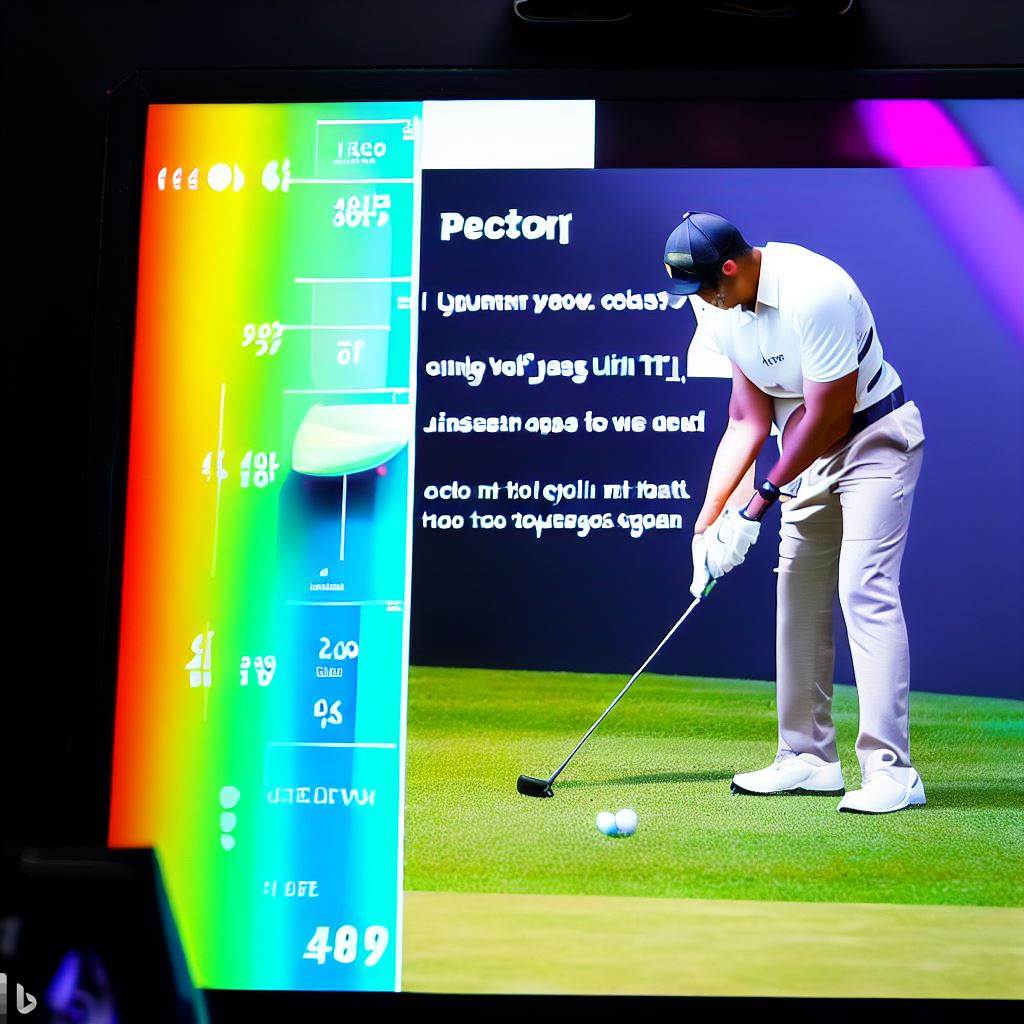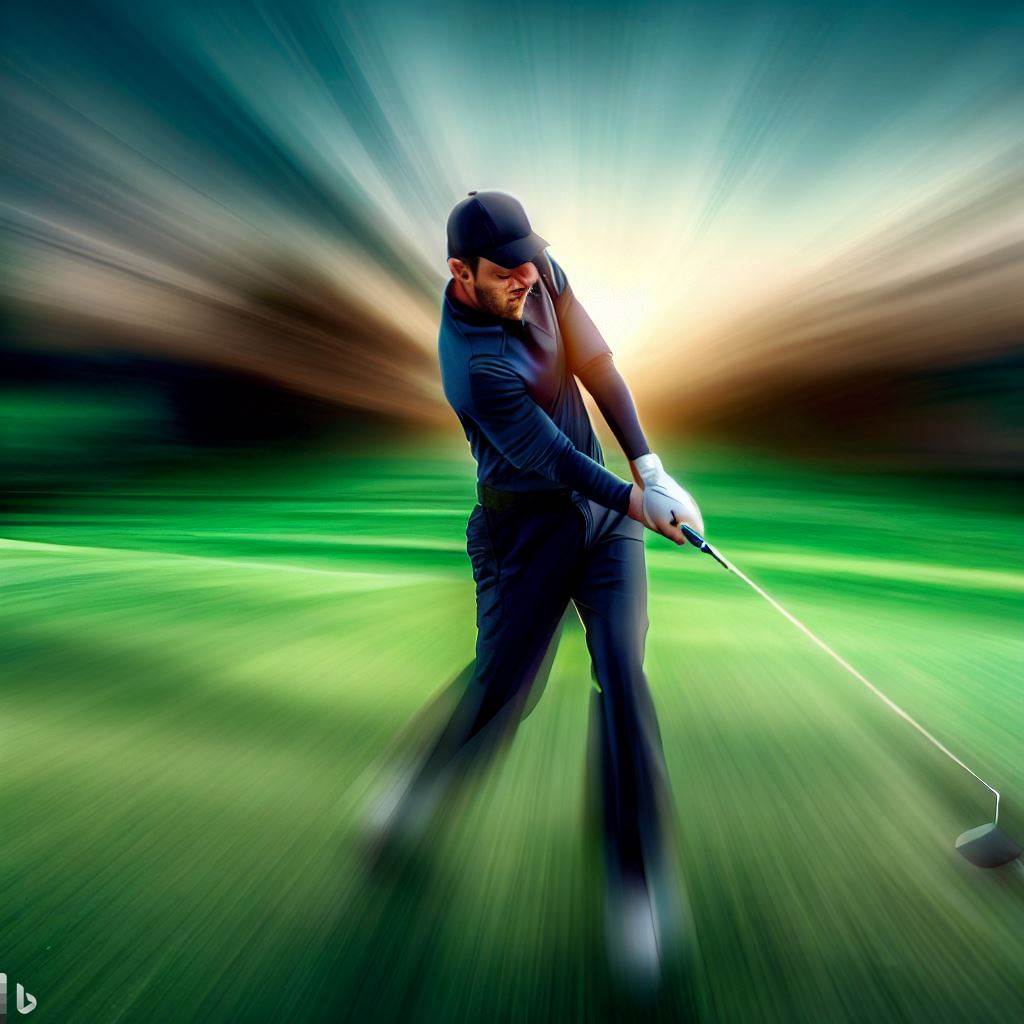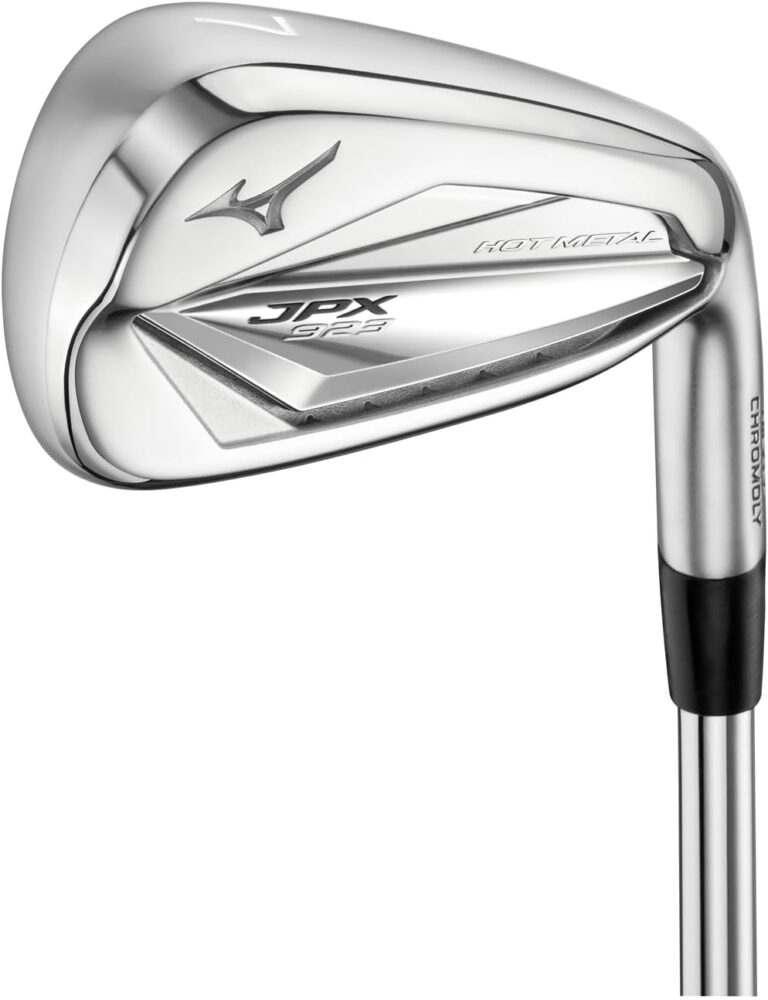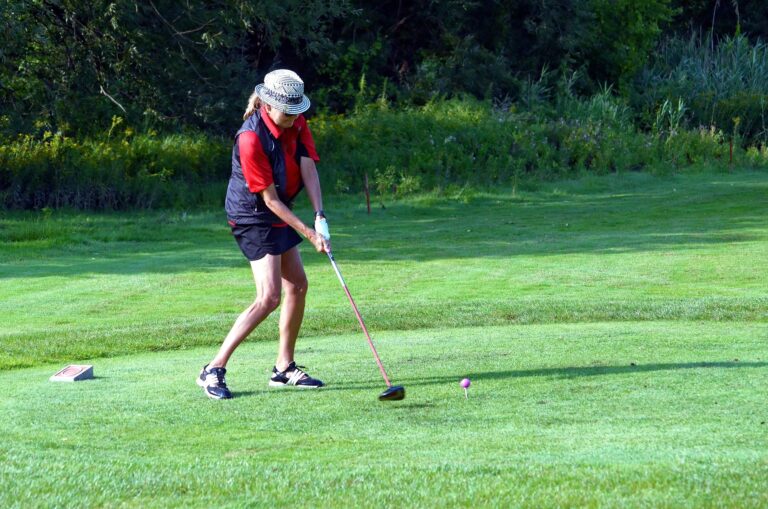How do i know my swing speed
Golfers know that swing speed is a crucial factor in determining how far their ball travels. However, many golfers are unsure of their swing speed and how to measure it. Knowing your swing speed can help you choose the right clubs and balls for your game, as well as improve your overall performance on the course.
There are several ways to measure your swing speed, including using a launch monitor, visiting a golf store, or using a swing speed radar device. Each method has its own advantages and disadvantages, and golfers should choose the method that works best for them.
By measuring your swing speed, you can gain valuable insights into your game and make informed decisions about your golf equipment.
The Importance of Knowing Your Swing Speed.

If you’ve ever watched a professional golf tournament, you’ve probably heard commentators talking about a player’s swing speed. But why is swing speed so crucial in golf? The short answer is that it directly impacts the distance you can hit the ball, and ultimately, your overall game performance.
The Science Behind Swing Speed.
Swing speed, in the simplest terms, refers to how quickly your golf club is moving at the moment it strikes the ball. Think of it this way: if you were to push a car to get it moving, the speed you’re able to push it will determine how fast and how far it moves.
Swing speed works on the same principle with your golf club acting as the “push” and the golf ball as the “car”.
The Influence on Distance.
In golf, the distance you can hit the ball is crucial. It can mean the difference between needing a long iron or a short wedge for your next shot, or reaching a par five in two shots instead of three.
Swing speed is directly proportional to the distance. The faster you swing your club, the farther you can hit the ball, given all other factors remain constant.
Consistency and Control
Knowing your swing speed isn’t just about hitting the ball farther. It’s also about consistency and control. When you understand your average swing speed, you can make adjustments to your game.
For example, if your swing speed is slower, you may choose to use a golf ball with lower compression for better performance.
Club Selection and Customization.
Your swing speed also influences the type of golf club that’s best suited for you. For instance, if you have a higher swing speed, you may benefit from a stiffer shaft, while a more flexible shaft might be ideal for slower swing speeds.
Many golfers have their clubs customized based on their swing speed to optimize performance.
The Key to Improvement.
Lastly, knowing your swing speed allows you to track your progress over time. It’s an objective measurement that you can use to gauge the effectiveness of your training, equipment changes, and physical conditioning programs.
By and large, understanding your swing speed is an essential aspect of improving your golf game. It affects your shot’s distance, the consistency of your shots, the type of equipment best suited to your style, and your ability to track improvements over time.
So, take the time to measure your swing speed, understand it, and use this knowledge to up your golf game!
Factors That Influence Swing Speed.
Swing speed is not just about the raw power you put into your swing. It’s influenced by factors like your physical strength, the flexibility and coordination of your body, and your golf club’s properties. The more harmonious the relationship between these factors, the better your swing speed.
Physical Strength and Conditioning.
Physical fitness is crucial when it comes to swing speed. It may seem obvious, but the stronger and more flexible you are, the faster you can swing a golf club.
Core strength, in particular, is essential because a strong core allows for better rotation and torque in your swing.
Flexibility, especially in the hips and shoulders, can enhance your range of motion, enabling a more extensive, more powerful swing.
Golf Swing Mechanics.
Proper swing mechanics are another key factor in determining swing speed. This includes elements like your grip, stance, backswing, downswing, and follow-through.
A smooth, coordinated swing can generate more speed than a disjointed or jerky one. For instance, many golfers lose speed because they start their downswing with their arms instead of their hips.
Working with a golf coach or instructor can help you refine your mechanics for a more efficient, powerful swing.
Club Selection.
The golf club you’re using can also affect your swing speed. The weight, length, and shaft flex of the club all play a role in how quickly you can swing it.
For example, a lighter club is generally easier to swing faster, while a club with a stiff shaft may require more force to get the same speed.
Mental State.
Believe it or not, your mental state can affect your swing speed. If you’re tense or anxious, your muscles may tighten up, restricting your swing and reducing its speed.
On the other hand, if you’re relaxed and focused, your swing is likely to be smoother and faster. So practicing mental techniques like visualization, breathing exercises, or mindfulness can help improve your swing speed.
Age and Gender.
It’s a reality that swing speed can be influenced by age and gender due to factors like muscle mass, flexibility, and endurance. However, with the right conditioning and training, these effects can be minimized.
In conclusion, increasing your swing speed involves more than just physical strength or swinging the club harder.
It’s about understanding the multitude of factors that influence swing speed and making targeted adjustments to your conditioning, technique, equipment, and mental approach to the game.
The Relation Between Swing Speed and Distance.
Here’s a quick math lesson: the greater your swing speed, the farther the ball goes. Simple, right? That’s why golfers strive to improve their swing speed – to gain that much-needed distance in their shots.
Swing speed and distance are two crucial elements tightly interwoven in the fabric of golf. These twin aspects of the game can often make the difference between a decent round of golf and an exceptional one.
But how exactly do they relate to each other? Let’s delve into the physics of golf and uncover the connection.
The Basic Relationship.
At the most basic level, swing speed and distance have a direct linear relationship. The faster the clubhead is moving at the moment of impact, the further the ball will travel.
This happens because a faster swing speed imparts more kinetic energy to the ball, which then translates into a greater distance.
The Role of Launch Angle and Spin.
However, the story doesn’t end there. While swing speed is a significant factor, the distance a golf ball travels also depends on the launch angle and the spin rate.
A higher launch angle combined with an optimal spin rate can maximize the distance, even with a lower swing speed.
Therefore, golfers need to find their own “sweet spot” of swing speed, launch angle, and spin rate for maximizing distance.
Ball Speed vs. Swing Speed.
Another factor to consider is the difference between swing speed and ball speed. Ball speed refers to the speed of the golf ball immediately after it is struck by the club. The higher the ball speed, the greater the potential distance.
While swing speed is a significant factor influencing ball speed, it’s not the only one. The efficiency of the strike, often referred to as the “smash factor,” also plays a critical role.
A clean, square hit on the clubface can result in a higher ball speed and therefore more distance, even with a slower swing speed.
Importance of Consistent Swing Speed.
It’s also important to note that consistency in swing speed is as crucial as the speed itself. An inconsistent swing speed will lead to unpredictable shot distances, making it harder for a golfer to control their game.
Consistency in swing speed enables a golfer to accurately judge the distance of their shots, leading to a better overall performance.
Rounding up on this point, while there is a direct relationship between swing speed and distance, golfers should also take into account other influencing factors such as launch angle, spin rate, ball speed, and the consistency of their swing speed.
Achieving a balance among these aspects will help maximize the distance and improve the overall golf game.
How to Measure Your Swing Speed.
Now we come to the crux of the matter. How do you determine your swing speed? Thankfully, modern technology has some solutions.
As we’ve established, swing speed is a crucial factor in your golf game. But how can you figure out what your swing speed is? Luckily, there are several ways to measure your swing speed, ranging from high-tech solutions to simple estimates.
1. Swing Speed Radar Devices.
Swing Speed Radars are portable, affordable devices that can provide an instant measurement of your swing speed.
You simply place the device a few feet away from your ball, take a swing, and the radar will display your swing speed. Keep in mind, though, while these devices are convenient, they may not be as accurate as professional-grade equipment.
2. Golf Launch Monitors.


Launch monitors are a more advanced and precise method for measuring swing speed. They use radar or infrared technology to track your club head and the ball, providing a detailed analysis of your swing speed, ball speed, launch angle, spin rate, and more.
While launch monitors offer the most accurate measurements, they can also be quite expensive, making them more suited for golf professionals or serious amateurs.
3. Swing Speed Apps.
There’s an app for everything these days, and that includes measuring your swing speed. Several mobile apps use your smartphone’s camera to analyze your swing and estimate your swing speed.
While not as accurate as dedicated devices, these apps can provide a decent starting point for amateur golfers.
4. Professional Club Fitting.
Many golf stores and training centers offer professional club fitting services, which often include a swing speed measurement. This is performed using high-tech equipment similar to launch monitors and provides accurate results.
5. Calculating Based on Carry Distance.
If you don’t have access to the methods above, you can estimate your swing speed based on your carry distance—the distance your ball travels through the air before it hits the ground. A general rule of thumb is to divide your average carry distance by 2.3 to get an approximation of your swing speed in mph.
Bottomline is, there are various methods available for measuring your swing speed, each with its own strengths and limitations.
Whether you choose a high-tech solution like a launch monitor or a simpler method like a swing speed radar or app, the key is to use the information to improve your game. After all, understanding your swing speed is the first step toward enhancing your golf performance.
Clubhead Speed Vs. Ball Speed
Remember that swing speed and ball speed are not the same. Swing speed measures how fast your club is moving, while ball speed is the speed of the ball immediately after impact.
How to Increase Your Swing Speed.
Having a good swing speed is crucial for any golfer looking to improve their game. Increasing your swing speed can result in longer drives and shorter, more manageable approach shots.
However, increasing your swing speed isn’t about merely swinging harder. It’s about developing the right techniques and strength, improving your flexibility, and choosing the right equipment. Let’s delve into how you can effectively increase your swing speed.
Improve Physical Conditioning.
Physical fitness plays a significant role in your swing speed. Enhancing your core strength, flexibility, and overall conditioning can result in notable improvements. Regular exercise, including weight training, cardio, and specific exercises aimed at improving your golf muscles, can contribute to a higher swing speed.
Work on Your Swing Mechanics.
Proper swing mechanics are critical to achieving a higher swing speed. Focus on elements such as your grip, stance, backswing, and follow-through. Consistently practicing and improving these elements can make your swing more efficient, which, in turn, can increase your swing speed.
Use the Ground.
One key to increasing your swing speed is to effectively use the ground to generate force.
This can be achieved by applying pressure into the ground on your backswing and then using that pressure to propel your body and club through the downswing, a movement often compared to the coiling and uncoiling of a spring.
Club Selection and Customization.
Your equipment can also affect your swing speed. Choosing a golf club that matches your swing characteristics can result in a speed increase. Consider factors like the club’s weight, shaft flex, and length. Custom-fitted clubs can offer the best match for your specific needs.
Regular Practice.

Like any other skill, increasing your swing speed requires regular practice. Regularly hitting balls at the driving range, practicing your swing at home, or even swinging a weighted club can all contribute to a faster swing.
Professional Coaching
A professional coach or golf instructor can provide personalized guidance and feedback that can be instrumental in improving your swing speed. They can help identify any issues in your swing mechanics and provide corrective measures.
Increasing your swing speed is not an overnight process. It requires patience, consistent practice, and a commitment to physical conditioning and technique refinement.
By focusing on these areas, you can significantly enhance your swing speed, leading to noticeable improvements in your overall golf game.
Frequently Asked Questions.

What is considered a good swing speed in golf?
The average amateur golfer’s swing speed is between 80 and 90 mph. On the other hand, professional golfers often have swing speeds exceeding 110 mph. However, a “good” swing speed is subjective and depends largely on your specific golfing goals and physical capabilities.
Can I increase my swing speed without changing my golf equipment?
Yes, you can increase your swing speed by improving your physical conditioning, refining your swing mechanics, and practicing regularly. However, using golf equipment that’s well-suited to your swing characteristics can also help maximize your swing speed.
How often should I measure my swing speed?
The frequency of swing speed measurement can depend on various factors, including your training intensity and how often you play golf. However, it’s a good idea to measure it periodically, perhaps every few weeks or months, to track your progress.
Can a faster swing speed improve my golf score?
A faster swing speed can potentially improve your golf score as it enables you to hit the ball further, which can result in shorter and more manageable approach shots. However, accuracy and control are also crucial for a good golf score, so focusing solely on swing speed might not yield the desired results.
Is it possible to swing too fast in golf?
Yes, swinging too fast can sometimes lead to a lack of control and inaccurate shots. It’s important to find a balance between speed and control to optimize your golf performance.
Remember, increasing your swing speed isn’t just about swinging harder. It’s about developing an efficient, controlled, and consistent swing that allows you to hit the ball further and more accurately.
Can anyone increase their swing speed?
Yes, with the right training and equipment, anyone can improve their swing speed.
What is the average swing speed for amateur golfers?
The average swing speed for amateur golfers is usually around 90-100 mph.
Conclusion
In conclusion, understanding and improving your swing speed can elevate your golf game significantly.
While there are various ways to measure and increase your swing speed, remember that consistent practice and a passion for improving will lead to the most noticeable results.
And remember, golf is a game of enjoyment. So, take your time, learn at your pace, and most importantly, have fun!







